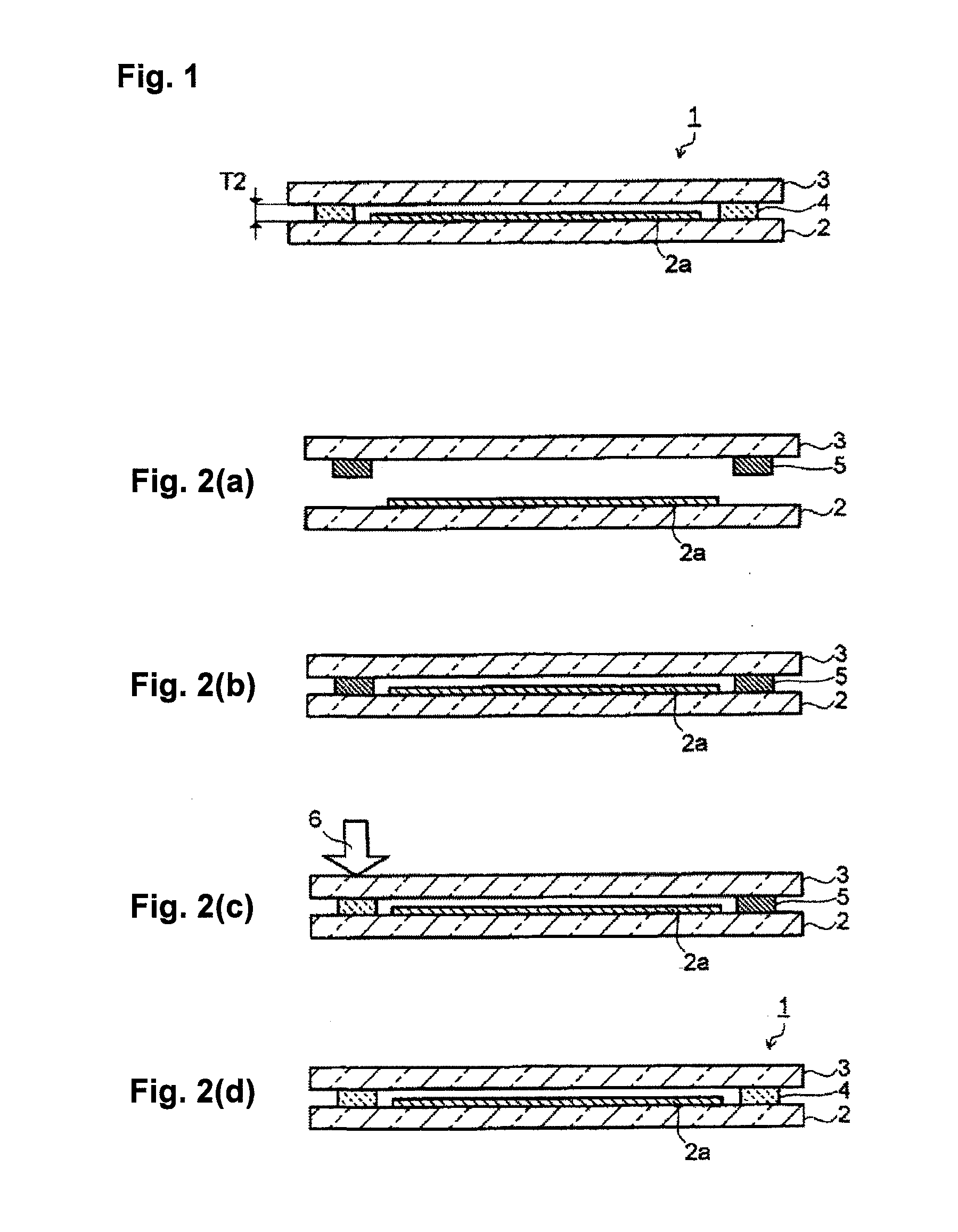Sealing glass, glass member provided with sealing material layer, electronic device and process for producing it
a technology of sealing material and glass, which is applied in the manufacture of electrode systems, electric discharge tubes/lamps, and final products. it can solve the problems of reducing the reliability of electronic devices such as fpds or solar cells, deteriorating the properties of electronic elements of oel elements or the like, and difficulty in sufficiently increasing the bonding strength between the sealing layer. it achieves good reproducibility, and improves the bonding strength
- Summary
- Abstract
- Description
- Claims
- Application Information
AI Technical Summary
Benefits of technology
Problems solved by technology
Method used
Image
Examples
example 1
[0063]A bismuth glass frit (softening temperature: 420° C.) having a composition comprising, as represented by mass percentage, 82.0% of Bi2O3, 6.5% of B2O3, 11.0% of ZnO and 0.5% of Al2O3 and further containing 18 ppm of Na2O as represented by mass percentage; a cordierite powder being a low-expansion filler; and a laser absorbent having a composition comprising, as represented by mass percentage 35% of Fe2O3, 35% of Cr2O3, 20% of Co2O3 and 10% of MnO; were prepared. The content of Na2O was analyzed by ICP. Further, as a binder component, 5 mass % of ethyl cellulose having a viscosity of 45 cps was dissolved in 95 mass % of 2,2,4-trimethyl-1,3-pentanediol monoisobutyrate to prepare a vehicle.
[0064]85 vol % of the bismuth glass frit, 10 vol % of the cordierite powder and 5 vol % of the laser absorbent were mixed to prepare a glass material for sealing (thermal expansion coefficient: 72×10−7 / ° C.). 84 mass % of this glass material for sealing was mixed with 16 mass % of the vehicle t...
examples 2 to 6
[0066]A sealing material paste was prepared in the same manner as Example 1 except that the composition of bismuth glass frit (including the content of Na2O), the types of the low-expansion filler and the laser absorbent and their composition ratio were changed to the conditions shown in Table 1. Further, formation of a sealing material layer on the second glass substrate and laser sealing of the first glass substrate and the second glass substrate were carried out in the same manner as in Example 1 except that the above sealing material paste was employed. Thus, an electronic device having an element-formed region sealed in a glass panel, was prepared and it was subjected to property evaluation to be described later.
examples 7 to 9
[0067]A sealing material paste was prepared in the same manner as Example 1 except that the material of the glass substrates was changed to alkali-free glass (thermal expansion coefficient: 37×10−7 / ° C.), and the composition of the bismuth glass frit (including the content of Na2O), the types of the low-expansion filler and the laser absorbent and their composition ratio were changed to the conditions shown in Table 1. Further, formation of a sealing material layer on the second glass substrate and laser sealing of the first glass substrate and the second glass substrate were carried out in the same manner as Example 1 except that the above sealing material paste was employed. Thus, an electronic device having an element-formed region sealed in a glass panel, was prepared and it was subjected to property evaluation to be described later.
PUM
| Property | Measurement | Unit |
|---|---|---|
| sealing temperature | aaaaa | aaaaa |
| thickness T1 | aaaaa | aaaaa |
| area | aaaaa | aaaaa |
Abstract
Description
Claims
Application Information
 Login to View More
Login to View More - R&D
- Intellectual Property
- Life Sciences
- Materials
- Tech Scout
- Unparalleled Data Quality
- Higher Quality Content
- 60% Fewer Hallucinations
Browse by: Latest US Patents, China's latest patents, Technical Efficacy Thesaurus, Application Domain, Technology Topic, Popular Technical Reports.
© 2025 PatSnap. All rights reserved.Legal|Privacy policy|Modern Slavery Act Transparency Statement|Sitemap|About US| Contact US: help@patsnap.com



